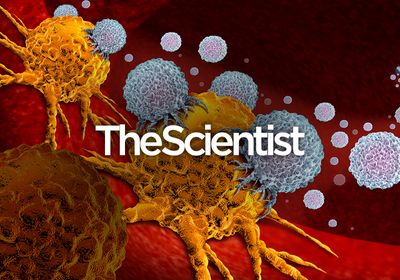
Protecting and treating those at high risk of severe infections is a paramount public health concern underscored by the COVID-19 pandemic. Although vulnerability to infection may seem like a unidirectional dilemma for certain preexisting conditions, when it comes to metabolic disorders such as diabetes, the relationship to severe COVID-19 infection is a two-way street. In one lane, individuals with diabetes are predisposed to severe viral infections, and in the other, SARS-CoV-2 infection can exacerbate underlying metabolic syndromes by increasing blood glucose.1
“There's this complex relationship between blood glucose and COVID,” explained Jie Sun, a professor at the University of Virginia School of Medicine. “The underlying mechanism is still very much unknown.” Sun’s research examines respiratory infections and immunometabolism—the interface between immunology and metabolism. To learn more about the mechanisms linking metabolism and viral infection severity, Sun and his research team investigated a metabolic protein called mitochondrial pyruvate carrier (MPC) and published their findings recently in Science Immunology.2
Sun’s interest in MPC stems from its involvement in metabolism, immune activation, and inflammatory responses. Under normal metabolic conditions, MPC imports pyruvate into mitochondria, which fuels energy production in the cell through glycolysis.2,3 Although metabolic processes such as glycolysis encompass a range of helpful chemical reactions that provide energy for cellular survival, dysregulated metabolic function can cause harm by promoting inflammation. For example, researchers linked insulin resistance and β-cell dysfunction in type 2 diabetes to immune activation and chronic low-grade inflammation. Glycolysis is involved in activating immune cells, and MPC activity plays a role in irregular type 2 diabetes glucose homeostasis.2-4
Sun’s team first deleted the MPC-coding gene in the immune cells of otherwise healthy mice, which improved how the mice responded to influenza virus or SARS-CoV-2 infection. The researchers then investigated a drug designed to treat metabolic disorders, called MSDC-0602K or MSDC for short. This drug inhibits MPC, and the researchers found that treating mice with MSDC lessened respiratory infection severity.
See, "Relevant Models Reflect Real-World Needs"
The researchers also examined a mouse model of diabetes-related metabolic syndrome to investigate the potential benefit of targeting MPC in high-risk patients with metabolic disorders. Blocking MPC either genetically or with MSDC reduces pulmonary inflammation and promoted lung recovery in the mouse model. MSDC also simultaneously lowered blood glucose and cholesterol, which spiked after influenza virus or SARS-CoV-2 infection.
“In addition to a flu model, using the mouse version of SARS-CoV-2, doing both models genetically and both models chemically with MSDC-0602K…that's pretty thorough,” said Eric Taylor, a professor of molecular physiology and biophysics from the University of Iowa, who was not involved in the study. By investigating multiple types of infection and modes of blocking MPC, Sun gained a better understanding of the molecular pathways downstream of this protein. The researchers found that MPC inhibition dampens specific inflammatory pathways in lung immune cells called alveolar macrophages. These pathways underly the unique bi-directional relationship between diabetes and COVID-19 severity.
Scientists initially developed insulin sensitizing drugs like MSDC to control the raging inferno of pathologic metabolism in disorders such as diabetes and non-alcoholic fatty liver disease (NAFLD).5 Sun’s work highlights how these drugs have potential for treating more than metabolic disorders. “Metabolism is something we need, but it's always a liability, kind of like a fire that is burning,” explained Taylor. “It has to burn just right, because if it gets out of control and if it’s stoked at the wrong time, then there's collateral damage.”
Sun’s findings in these preclinical models provide hope that MPC inhibition may offer a safer alternative to steroidal treatments for such collateral damage, including during severe COVID-19 infections. Standard of care therapeutics for severe COVID-19 such as dexamethasone target inflammation. However, dexamethasone can increase blood glucose, making it unsuitable for many individuals with preexisting metabolic disorders, who are among those most likely to need treatment for severe COVID-19 complications.6,7 “We thought [MSDC] would have, presumably, a better effect than dexamethasone for treating people with underlying metabolic conditions,” Sun shared. “We really want to test the therapeutic potential.”
References
- Lim S, Bae JH, Kwon HS, Nauck MA. COVID-19 and diabetes mellitus: from pathophysiology to clinical management. Nat Rev Endocrinol. 2021;17(1):11-30. doi:10.1038/s41574-020-00435-4
- Zhu B, Wei X, Narasimhan H, et al. Inhibition of the mitochondrial pyruvate carrier simultaneously mitigates hyperinflammation and hyperglycemia in COVID-19. Sci Immunol. 2023;8(82):eadf0348. doi:10.1126/sciimmunol.adf0348
- Zhu H, Wan H, Wu L, et al. Mitochondrial pyruvate carrier: a potential target for diabetic nephropathy. BMC Nephrol. 2020;21(1):274. doi:10.1186/s12882-020-01931-5
- Hameed I, Masoodi SR, Mir SA, Nabi M, Ghazanfar K, Ganai BA. Type 2 diabetes mellitus: From a metabolic disorder to an inflammatory condition. World J Diabetes. 2015;6(4):598-612. doi:10.4239/wjd.v6.i4.598
- Ozturk ZA, Kadayifci A. Insulin sensitizers for the treatment of non-alcoholic fatty liver disease. World J Hepatol. 2014;6(4):199-206. doi:10.4254/wjh.v6.i4.199
- Tamez-Pérez HE, Quintanilla-Flores DL, Rodríguez-Gutiérrez R, González-González JG, Tamez-Peña AL. Steroid hyperglycemia: Prevalence, early detection and therapeutic recommendations: A narrative review. World J Diabetes. 2015;6(8):1073-81. doi:10.4239/wjd.v6.i8.1073
- Underlying Medical Conditions Associated with Higher Risk for Severe COVID-19: Information for Healthcare Professionals. Centers for Disease Control and Prevention. Updated February 9, 2023. Accessed May 3, 2023. https://www.cdc.gov/coronavirus/2019-ncov/hcp/clinical-care/underlyingconditions.html






